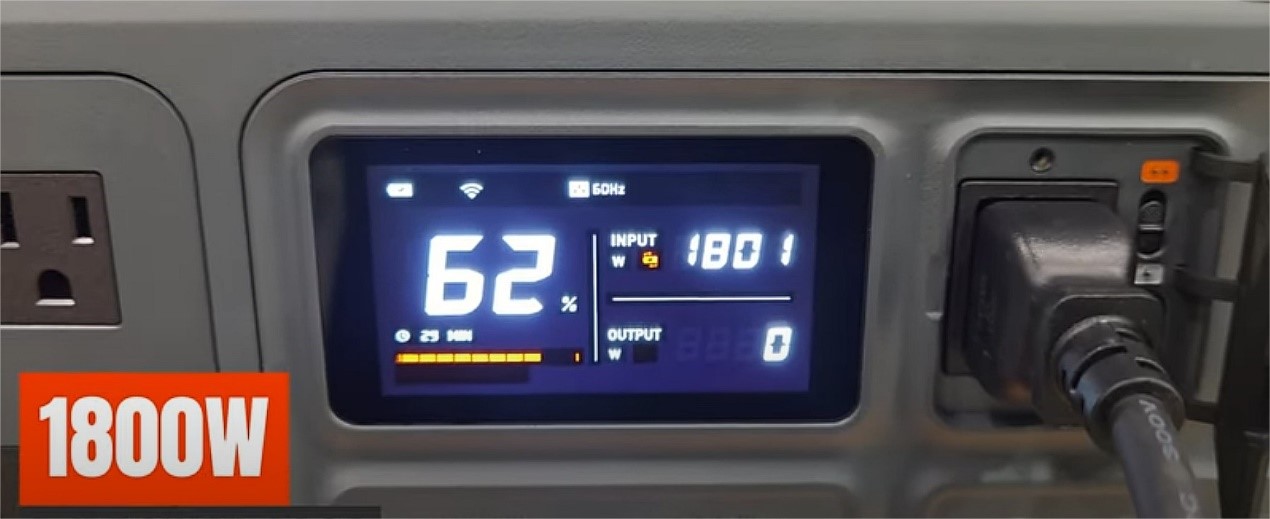When I started digging into the world of powerful, portable power stations, I had two models in mind— Jackery Explorer 2000 Plus and DJI Power 2000.

Both are top-tier, under $1,500, and loaded with features. But after testing and comparing them side-by-side, I realized that despite their similarities, there are some game-changing differences worth talking about.
In this article, I’ll walk you through everything I discovered—from inverter performance and solar input to noise levels and app experience. If you’re in the market for a high-capacity power station, this hands-on comparison should help you make an informed decision.

Pricing and Value: DJI Takes the Lead Early

The very first thing that caught my eye was the price. DJI Power 2000 comes in at $1,299, while Jackery is priced at $1,499. That $200 difference is nothing to ignore—especially when the specs are nearly identical on paper.
- DJI: $1,299
- Jackery: $1,499
- Both include 5-year warranties and responsive support

For budget-conscious buyers, this immediately tilts the scale in DJI’s favor—without sacrificing any of the essential performance features.
Inverter Efficiency Test: A Close Contest with a Winner

I decided to test both units side by side to see how efficiently they convert stored energy into usable power. After a full inverter efficiency test, the results were pretty telling. The Jackery Explorer 2000 Plus gave me 1,869 watt-hours out of its rated 2,042 watt-hours, landing an impressive 91.2% efficiency.

The DJI Power 2000 wasn’t far behind, clocking in at 1,830 watt-hours and 89.6% efficiency. That slight edge—just under 2%—might not seem like a lot, but over time it adds up. So, in terms of squeezing the most power from your battery, the Explorer 2000 Plus comes out on top in this round.
Inverter Expansion: Jackery Takes the Lead
One feature I know many users care about is inverter expansion—especially when they want more power flexibility. Jackery really shines here. By pairing two Explorer 2000 Plus units, I was able to double the output to a hefty 6,000 watts. It’s worth noting, though, that this setup still runs on 120 volts and won’t deliver 240V if that’s what you’re after.

On the DJI side, there’s no inverter expansion yet. But I did spot a mysterious communication port on the Power 2000, which makes me wonder if something bigger is brewing. For now, though, this round clearly goes to Jackery.
Battery Expansion: DJI’s Future-Proof Advantage

If you’re planning to use your power station for more than just weekend camping trips, expandability matters. Jackery allows expansion up to 12 kWh per unit and 24 kWh with two.

But here’s where DJI absolutely dominates: it supports up to 22.5 kWh on a single unit.
- Jackery: 12 kWh max per unit (24 kWh with 2 units)
- DJI: 22.5 kWh on a single unit
For me, that means fewer devices to manage and a more scalable setup in the long run.
UPS Transfer Time: DJI Is Lightning-Fast

If you rely on sensitive devices—like a CPAP machine, home server, or work computer—the UPS feature is crucial. I tested both units’ switchover times during a simulated outage.
- Jackery: 20 milliseconds
- DJI: 10 milliseconds

That 10 ms switch by DJI is one of the fastest I’ve seen. It’s barely noticeable and protects devices better from sudden power loss.
Portability and Build Quality: A Clear Win for DJI

One thing I didn’t expect was how much build quality would influence my experience. DJI feels like a more modern, purpose-built unit. It’s 14 pounds lighter, more compact, and designed with front-facing ports—a real blessing when placing it in tight spaces.
- DJI: Compact, front ports, rigid fire-retardant shell
- Jackery: Rear ports, bulkier, wheels but less sturdy handles
DJI even uses a subnano coating to protect components in high-altitude environments. That’s attention to detail I really appreciate.
Output Ports and Device Compatibility

If your setup requires multiple outputs, this section might sway you. Jackery gives you four AC outlets and a built-in 12V car socket. DJI includes three AC outlets, but it crushes Jackery on USB options:
- Jackery: 4 USB ports total (limited USB-C)
- DJI: 8 USB ports (4 USB-C + 4 USB-A)

For someone like me who’s constantly charging cameras, phones, and laptops, DJI’s USB offering is a huge plus.
Solar Input and Real-World Charging Speed

Solar capability can be a make-or-break feature. DJI supports up to 1,800 watts, while Jackery taps out at 1,400 watts. But it’s not just the spec sheet—it’s the real-life performance that counts.

- DJI consistently hits 1,800W during AC and solar charging
- Jackery struggles to maintain a full 1,400W consistently
This makes DJI more reliable for off-grid charging, especially in full sunlight.
Noise Level: The Silent Performer

I tested both units in a quiet environment. Jackery clocks in at around 42 dB, which isn’t terrible—but noticeable.

DJI, on the other hand, runs under 30 dB. That’s quieter than a refrigerator.
- Jackery: 42 dB
- DJI: <30 dB
If you’re like me and plan to use this indoors, or at a campsite, quiet operation really matters.
App Experience: DJI Gets It Right
App control shouldn’t be a frustrating experience—and unfortunately, Jackery still has some work to do. I ran into login issues and trouble syncing multiple devices.

DJI’s Home app, however, was buttery smooth. Easy setup, no glitches, and full control over the station from anywhere.
- Jackery: Buggy, single-device login issues
- DJI: Seamless pairing, alerts, control features
For a tech-heavy setup, app reliability adds real convenience.
✅ Key Takeaways at a Glance

Let me break down the core comparisons so you can decide what matters most to you:
Feature | DJI Power 2000 | Jackery Explorer 2000 Plus |
Price | ✅ $1,299 | ❌ $1,499 |
UPS Transfer Time | ✅ 10 ms | ❌ 20 ms |
Battery Expansion | ✅ 22.5 kWh (1 unit) | ❌ 12 kWh per unit |
Solar Input Capacity | ✅ 1,800W | ❌ 1,400W |
Portability & Design | ✅ Lightweight & Compact | ❌ Bulky with wheels |
Noise Level | ✅ <30 dB | ❌ 42 dB |
USB Port Count | ✅ 8 Total (4 USB-C) | ❌ 4 Total |
App Usability | ✅ Smooth Experience | ❌ Connectivity Issues |
Inverter Efficiency | ❌ 89.6% | ✅ 91.2% |
AC Outlet Count | ❌ 3 outlets | ✅ 4 outlets |
Conclusion: DJI Is the Smarter Choice for Most Users

I went into this test with high expectations for both models—and they both deliver in important ways. Jackery is still a solid option, especially for those who prioritize inverter efficiency and more AC outlets.

But for the average user, especially those seeking portability, expandability, quiet operation, and better solar capabilities, the DJI Power 2000 easily comes out on top.
If you want more value, cleaner design, and a future-ready setup, DJI is the better buy.



























